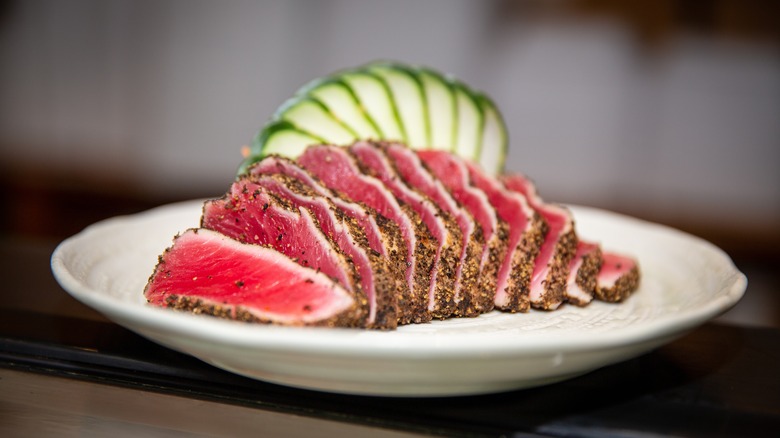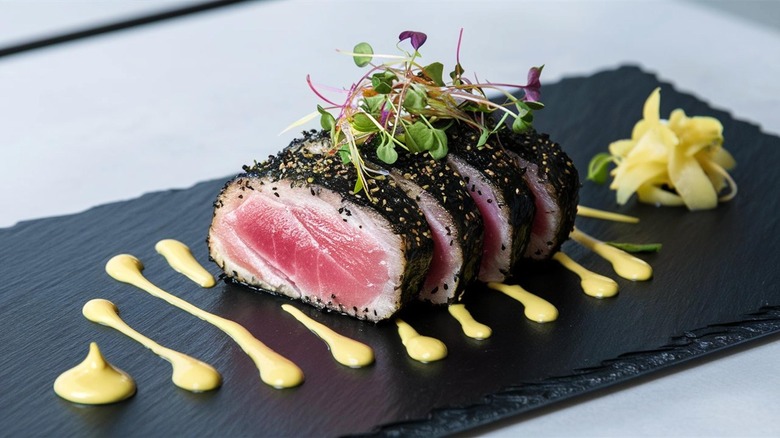The 2 Types Of Fat You Need For Perfect Ahi Tuna Steaks
When you want a dish that's sure to impress, it's hard to go past an ahi tuna steak. Whether it's a treat for yourself or you're entertaining, there's something about tuna steak that makes it feel like a restaurant dish. There's nothing particularly complex about the dish, but there are two things you need to get right: The quality of the fish and the sear.
The perfect ahi tuna steak is all about balance. The exterior is seared to form a crust, anywhere from golden to crispy, but the interior should remain rare or medium-rare. If you want your sear to have flavor as well as color, consider using both butter and oil when cooking your ahi tuna.
If you use butter alone, the high heat required for a good sear will turn it black and bitter by the time your tuna is ready. But by mixing it with a neutral oil with a high smoke point, you get the best of both worlds: The rich flavor of brown butter and staying power in the pan.
More tips for getting the best sear on your tuna
Choosing a good cut of tuna might seem like a no-brainer for getting the best taste, but the cut you buy does have an impact on how you sear the fish too. When the cut is too thin the inside will be overdone and dry by the time the Maillard reaction has done its work. Look for steaks at least 1 inch thick.
Marinating your tuna is a great way to add flavor, as with this chili lime tuna recipe, but keep a careful eye on the marination time. Leaving the tuna in a citrus marinade for too long will start to cook the fish, and while this won't affect your ability to get a nice crust on the outside, it will mean that the center will no longer be fresh and pink.
Finally, make sure your pan is hot before you add the tuna — your oil and butter combination should be approaching its smoke point. The cooking time will depend on the thickness of your steak, but you should be able to get a good sear in 45-60 seconds on each side.

